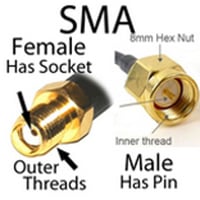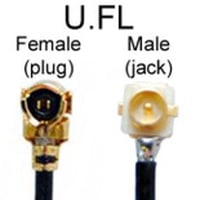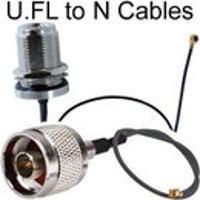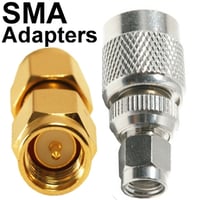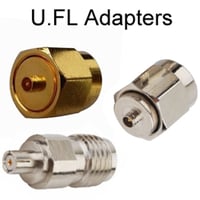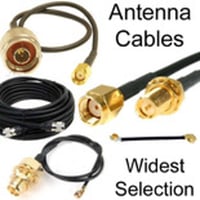Small Enclosures for POE, Power Supply, Telco
Small Enclosures for Electronic Devices:
These small wall boxes are a type of wall-mounted electrical enclosure that are used as containers for domestic or industrial electronics, power, scientific, and telecommunications equipment. They are also known as electrical enclosure boxes. Simply put they are boxes or cases that are made from durable material that can be readily mounted and installed on a wall with wood screws or bolts via pre-drilled holes.
Small enclosure wall-mounted dimensions
- Small enclosures typically have a length of between 1 and 6 inches (25.4 to 152.4 millimeters) and are designed for small electrical and electronic components.
The dimensions of electrical and electronic enclosures are critical to the performance of the enclosure and the equipment it contains. Small enclosures should be carefully sized to the equipment they will house. Correct sizing not only ensures space utility but also protects the enclosure from damage if impacts jolt the container and dislodge its contents. The length, height, and width of the enclosure should only exceed the dimensions of the circuit it will house by a small amount, perhaps allowing room for any upgrading of the stored equipment.
Space efficiency is often a priority for enclosures with the requirement to fit as much equipment as possible into each enclosure. The use of multiple small enclosures may prevent a larger enclosure from becoming overcrowded with poor access to any person needing to undertake repairs or upgrades. Also, the use of appropriately sized and positioned smaller enclosures delivers a better line of sight, and spacing of connected components in your chosen location.
Electrical enclosure box features
They may be used indoors or outdoors and have the primary purpose of protecting the equipment they house from physical impacts and the ingress of moisture, dirt, and dust. They also can protect personnel who handle them from exposure to an electrical hazard.
Small general-purpose enclosures are sturdily built from either metal or plastic with secure hinges and the ability to be locked to prevent unauthorized access. Locks at to the security and protection small enclosures provide. Designs vary by locking mechanisms which include single lock wall boxes, cam locking enclosures, and padlocked wall-mount enclosures.
The enclosures also carry knockouts that are sealed with grommets to allow the cabling of the equipment to pass through the enclosure without strain or damage. Enclosures can be further customized as needed for the type of equipment it will house with a variety of enclosure accessories.
Small enclosures are a versatile, low-profile solution for a range of applications that extend beyond Power Over Ethernet and Telecommunications. These enclosures can be used by manufacturers of equipment and circuits, facilities managers, and maintenance engineers for the reliable housing of electronic circuits and network equipment. They are easily integrated into various systems and networks and can be adapted with the appropriate accessories to your specific requirements.
Other applications of small multi-purpose enclosures include:
- Housing electrical junctions
- Electrical control boxes
- Metering and sensors
- Housing Printed Circuit Board Assembly (PCBA)
- Housing power modules for CCTV
- Enclosures for ring stick up cam power units
- Enclosures for solar energy components
- Protecting wireless networking components
- Storing electrical switches, power terminals, and outlets
- Housing telecoms and networking center components, especially if patching or splicing of nodes is needed
- Marine electrical enclosures
- Weatherproofing security equipment
The use of these small wall-mounted units makes the installation of network equipment and electrical junctions simple, especially where the availability of space is a concern. Wall mounting keeps components off the ground for better security, safety, and protection from environmental exposure, which is vital for sensitive equipment.
Small outdoor enclosures are designed for the challenge of being mounted in an external environment. They are often described as being “waterproof”, but most units will specify the degree of protection conferred by the enclosure in its install location by using an IP rating or NEMA code.
Key materials for small enclosures
- Polypropylene is a rigid crystalline plastic that offers good protection for sensitive equipment or live components. It is translucent and has color added. It offers excellent impact and fatigue resistance and is resilient against both chemical exposure and corrosion. Polypropylene remains stable over a wide temperature range, typically between -20 and 120 degrees Celsius (-4 to 248 degrees Fahrenheit).
- Polycarbonate is a tough, hard-wearing plastic that is ideal for enclosures due to its strong dimensional stability and relatively low weight. Polycarbonate is in widespread use in the electrical and electronics sectors and is flame retardant. It is transparent but has color added to make it opaque. It can also be blended with other plastics, or be combined with stabilizers and other additives. It is temperature stable over a wide range (-20 degrees Celsius to 140 degrees Celsius / -4 degrees Fahrenheit to 284 degrees Fahrenheit). Polycarbonate will withstand prolonged exposure to sunlight, blocking the penetration of UV rays to the components it houses.
- Polyvinyl Chloride (PVC)Is a high strength thermoplastic. It has comparable strength to polycarbonate, making it a cost-effective alternative. It is one of the most widely used plastic due to its ease of processing and durability and despite its strength, remains relatively lightweight. Rigid PVC enclosures are stiff, retaining their shape, with good thermal insulation and chemical resistance. It is intrinsically flame retardant and self-extinguishing, making it advantageous for use in junction boxes and other high voltage applications. PVC’s resistance to UV photodegradation also makes it advantageous in outdoor enclosures.
Key considerations for sizing an electronic enclosure
- Your first step is to measure the device or components you want to occupy the enclosure.
- You will need to consider how the equipment will be mounted in the enclosure, for example, on a DIN rail. The space required for your mounting components will also need to be accounted for.
- If the equipment has pushbuttons, switches, or other protrusions these will need to be accounted for in the usable depth of the enclosure.
- Consult your equipment manufacturer or specifications for any requirements for venting or other heat dissipation strategy.
- You will also need space clearance for installers to assemble and mount components within the enclosure and attach it to the wall.
Installation manuals and technical documentation for the electrical or electronic equipment to be housed in the enclosure may mention the following spatial parameters that may need to be adhered to:
- The minimum respect distance: This is the minimum distance between the component to be housed within the enclosure and the wall of the enclosure. This must be adhered to to ensure that adequate heat dissipation can take place.
- Distances between individual internal components within the enclosure: Space allowances should be made for components that are housed next to each other with the enclosure to prevent overheating and a reduction in power current due to extreme proximity.
- The maximum drilling surface available: for internal and external mounting.
Small electronic enclosures for Power Over Ethernet (PoE)
Small enclosures are ideal for housing injectors and other components used for Power over Ethernet.
Small outdoor enclosures are essential for properly housing the components needed for PoE networking. They can house:
- A PoE network switch is a built-in network switch that has in-built PoE injection. They vary in the number of ports they carry and therefore the number of devices that can be connected. Devices can be connected to the switch which can detect if they are PoE-enabled and deliver power automatically if feasible.
- A PoE injector or midspan can be added to a non-PoE network to add PoE capability. It is a common upgrade to local area network installations. Each network connection can be patched through the injector for controlled automatic power delivery to compatible devices.
- PoE splitters may also need an external enclosure. These devices enable PoE to be delivered to non-PoE compatible devices by separating out the power input and data input and delivering them separately. They are a key solution for legacy equipment on a PoE network.
Small electronic enclosures for Telecommunications
Rapid innovation and expansion of telecommunications infrastructure have increased the demand for a variety of enclosure types and sizes for housing sensitive equipment and components. The 5G rollout and implementation of small-cell networking have meant that cellular and wireless networking installations like microcells need to be better customized to their environment, especially where real estate for installations may be limited.
Smaller telecommunications components like batteries, PSUs (Power Supply Units), and cable connections or terminations will require suitable outdoor enclosures that deliver physical resilience and weatherproofing that is needed for open-air or weather unprotected conditions. Cellular networking equipment can also present a fire hazard, so the selection of a flame retardant enclosure is especially important.
Small enclosures for Printed Circuit Board Assemblies (PCBAs)
These small enclosures can be used as PCB mounting enclosures. PCBAs are printed circuit boards that have their components installed and soldered. These completed boards are now capable of performing the specific function they were designed for.
General use project enclosures are capable of storing and protecting PCBAs while providing access to the boards when necessary.
These enclosures are suitable for use as potting boxes, small to medium-sized plastic cases that are used to encapsulate PCBs. The plastics used are heat and fire-resistant and provide the protection necessary for reliable performance of the circuit.
Frequently Asked Questions:
What options are available for protecting any exposed cable connections that exit the small enclosure?
Connectors (radio frequency, USB) that are exposed are especially vulnerable to the effects of exposure, primarily corrosion which is progressive and will track up the attached cable and into equipment if not prevented.
- Cable glands: The cable entry point into the enclosure can be sealed by installing a cable gland consisting of a sealed conduit and bulkhead connection to secure the enclosure knockout or outlet. Cable glands are useful because they also prevent excessive strain or twisting of a cable connection that can cause damage.
- Silicone tape: This highly flexible, moldable table is used to provide a weatherproof seal for connections which provides good insulation and safeguards electrical performance. Simply stretch-wrap the tape around the connection and press it down and mold it to form a good seal that can be cut away if the connection needs to be accessed.
- Silicone grease: Dielectric grease provides exceptional protection for connections from moisture ingress and corrosion. It does not harden and can be applied to the exterior of connectors and their threads to keep them corrosion-free.
In conclusion
Small enclosures are a networking accessory with high utility for a wide range of electrical, electronic, and networking installations. With robust, high performing materials and functional designs that deliver ease of installation and use, this selection of small enclosures should provide a suitable solution for a range of technologies.
LEARN MORE:

